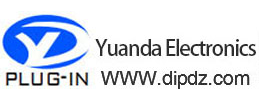Comparison and difference between tactile switch and membrane switch
HRO's production parts will compare the tactile switch and the membrane switch from these aspects. The tact switch mainly includes: stamping--injection--cleaning--assembly--forming--inspection and the like; and the process of the membrane switch is mainly: silk screen--die-cut--assembly--detection process. Both of them have high requirements on the production environment. Relatively speaking, the higher the dustproof level, the more reliable the product quality is. The membrane switch requires high precision, requires precise matching of various parts, and is also very picky about the appearance and color of the product. The touch switch requires a higher degree of precision, because the cooperation of each part directly affects the product description and feel, and the performance requirements of the product are very high, but the appearance and color of the product are not as picky as the membrane switch. Light touch membrane switch
The cost and price of the tactile switch are relatively low, and no large price adjustment is caused by the fluctuation of raw materials in the market; while the membrane switch is relatively expensive and bulky, and is greatly affected by the raw material price factor. Both the tactile switch and the membrane switch are functional switches. When the tact switch is used, the switch can be turned on by gently pressing the switch button. When the hand is released, the switch can be disconnected, and the internal structure is made of metal shrapnel. Forced to move to achieve continuity. The membrane switch is a kind of button with its own line. Usually, the uppermost layer is a panel with text or pattern composed of PET or PC. The lower layer is an electrically conductive circuit, and the middle layer is an analog switch and is isolated. The double-sided adhesive made of PET material, the lowermost part is usually the contact and connecting line on the PET material. When the button portion of the surface layer is pressed with a finger, the button contact contacts the corresponding portion of the contact portion of the lower layer to form a current connection.
The touch switch is small in size and is a standard part. The size and related parameters must be combined with industry standards and the color is relatively simple. The membrane switch can be customized according to customer requirements, and it is more convenient and flexible to use. The membrane switch has good flexibility, closed structure and waterproof structure, and has better adaptability to the environment. The tact switch cannot independently generate functions, and must be used together with the PCB circuit board to form a complete open control system; and the membrane switch integrates the panel, the switch and the conductive circuit to form a complete control system independently. Can provide customers with a holistic switching solution. Light touch membrane switch supply
Due to its small size, long life, and light touch, it is widely used in many fields such as household appliances. With the continuous improvement of people's living standards, the upgrading of these household appliances is getting faster and faster, and the number of them needs to be larger and larger. This is also the biggest potential direction for us to be optimistic about its development prospects.
